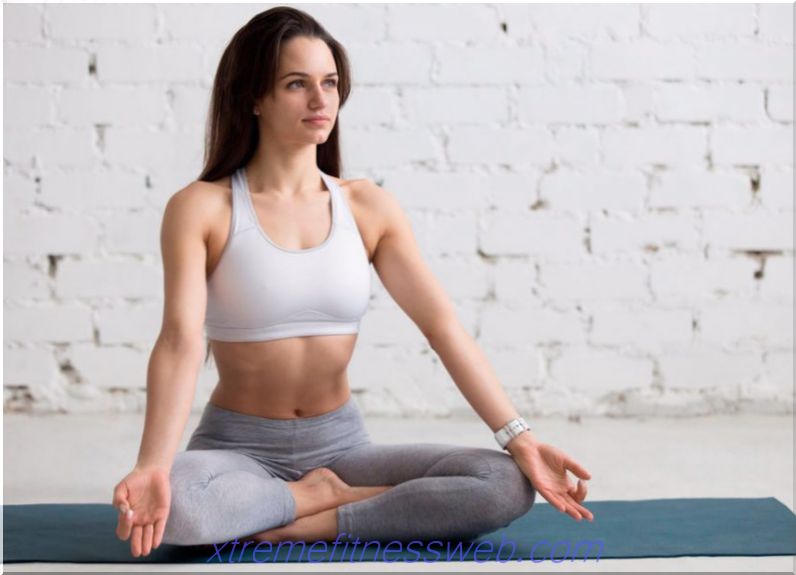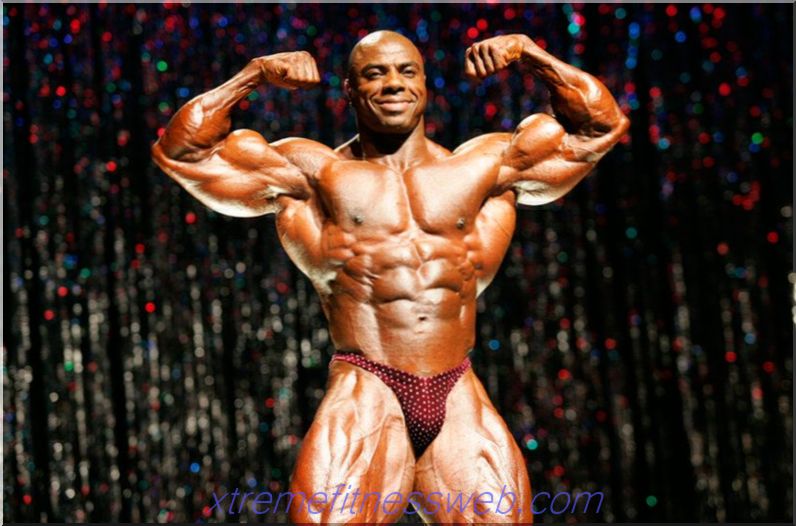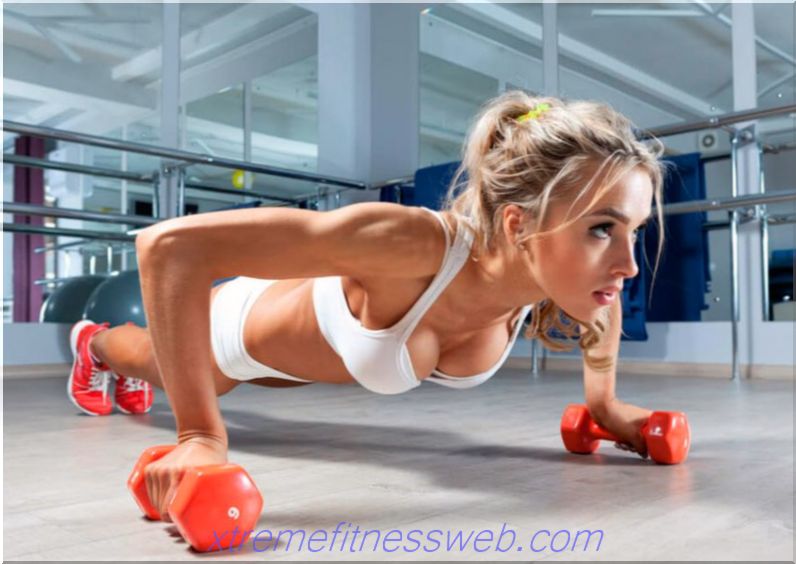
Standing on toes develops calf muscles. Performing the exercise causes the calves to stretch to the maximum at the lowest point during movement and contract, but already statically. It may seem that doing such upgrades is easy enough, but it is absolutely far from the truth. Most novice athletes do not know the correct technique for this exercise. They choose too large working weights and perform a lift with a small amplitude without focusing on working out the calf muscle groups. If you do not follow the correct technique, the effectiveness of the exercise will be minimal. In order for the exercise to bring maximum benefits, you need to know how to do it correctly. The time spent on development will fully justify itself.
Content
- 1 The essence of the exercise
- 1.1 Benefits of Exercise
- 1.2 Contraindications
- 2 What muscles work
- 3 types of exercises
- 3.1 In the simulator
- 3.2 With a barbell
- 3.3 With dumbbells
- 4 Summary
Essence of the exercise

Standing on toes is the most important exercise for building up the shanks. It can be performed in a wide variety of variations. Use dumbbells, a barbell on the shoulders, and also perform lifts in a special simulator or Smith. The result, of course, will be different. All other existing exercises for working out the calf muscles are derived from lifting on toes from a standing position.
The biomechanics of the exercise is completely repeated when training the calf muscles for leg press. The difference is that there is no axial load on the spine. Exercise "donkey" from the golden era of bodybuilding represents the same climb on toes standing. The only difference is that the body leans forward. This leads to the fact that the load is slightly modified.
The benefits of exercise

To achieve hypertrophy, it is enough to perform an ascent to the toes once every seven days. Exercise can be done at the end of a leg workout. The calf muscles are involved in performing many basic movements as a stabilizer, for example, front squats with a barbell, deadlift.
The stronger and more developed the calf muscles, the greater the weight the athlete can lift. Caviar must be trained not only for the beautiful muscles of the lower leg, but also for those who wish to lift large working weights when performing basic movements. Powerlifters and crossfit athletes who train for a long time, always include in their schedule time for the development of calf muscles.
Contraindications
To assess the risks associated with the exercise, you need to understand the mechanism of load distribution. Strong pressure is exerted on the hamstring. People who have already experienced certain problems with him, for example, doing frontal squats, are not recommended to perform the exercise.
Axial load is also on the vertebral section. It is small, but present. Most of all, such a load is felt when performing exercises in the simulator and in Smith, as well as with a barbell on the shoulders. The greater the working weight, the higher the degree of load. To focus on the work of the calf muscles, it is recommended to work with average weight.
People suffering from a hernia, cervical protrusion alone, osteochondrosis, kyphosis and other serious problems associated with the spine, it is better to train the calf muscles in a simulator designed for leg press. Biomechanics is no different from the classic standing toe-up, but eliminates unnecessary stress.
What muscles work

The calf muscles account for almost all of the dynamic load. This is approximately ninety percent. The rest is distributed to the extensors of the vertebral section, buttocks, quadriceps, trapezius. In order for the leg muscles to develop fully, it is necessary to pay attention to the training of the soleus muscle, located directly under the calf.
To achieve uniform pumping of the lower leg, they perform lifting on the socks not while standing, but sitting in the simulator. A well-developed soleus muscle literally “pushes” the calf out. This gives the lower leg a peak shape. The posterior and middle bundles of the deltoid muscle groups work similarly.
Varieties of exercises
There are various ways to perform an exercise. Depending on the method, the trainee may need a wide variety of equipment.
In the simulator

Represents the most common variation. A machine for training the calf muscles is today in almost every modern gym. Its main advantage is the maximum convenience for stretching muscle groups at the lowest point of amplitude. This is due to the distance that remains between the platform and the floor surface.
Technique of execution:
- Become in a starting position. On the platform there are only foot socks, and the heels are lowered down. They should fail as much as possible. The validity of the adopted position is indicated by stretching in the calf muscles. From this point, each subsequent repetition is performed.
- At the bottom, the extreme point lingers for a few seconds. This allows you to stretch the calf muscles as much as possible. It is necessary to try to do the exercise in the maximum possible amplitude.
- Again they rise to the socks. Try to stand as high as possible and perform peak contraction at the top.

It is necessary to keep in the extreme upper position for as long as possible. Pain should be overcome and the calf muscles compressed. The longer the better. This allows you to achieve the maximum possible effect and result.
Peak contraction held for 3-4 seconds is a pretty good indicator. Strong pumping begins to be felt after 6-8 rises. You must perform at least 5 more repetitions, which will be given through pain.
The main task when performing this exercise is to work out the calf muscles to a complete failure. Several contractions must be performed after it is impossible to make a peak contraction and maximum stretching. This allows you to completely "finish off" the muscle.
This recommendation applies to absolutely all varieties of this exercise, and not just to what is done using the simulator. If this device is not available, it can be performed in a hook.

Another alternative is Smith. In this case, the bar is held on the trapeze similar to squats or in outstretched arms.

With a barbell

Unfortunately, not every gym has a machine for working on the calf muscles. If this is your case, the lifts are performed either in Smith or with a barbell. To simulate the entire biomechanics of the exercise in the simulator, a small platform should be placed under the socks. This allows you to increase the amplitude of movement and stretch the calves at the very lowest point. This condition is mandatory. The lack of a platform will instantly reduce the effectiveness of the exercise by half, and the load will become inferior. To get involved in too large weights is not recommended, because you need to feel the work of each muscle, and not just the lifted kilograms.
With dumbbells

There is not much difference with the previous variations. The difference is that the working weights are not held on the back, but in the hands. This variety also requires laying a platform under the socks to stretch the calf muscles at the lower point of the amplitude. Without this condition, the load will not be emphasized on the calf muscles. This, as in previous versions, reduces efficiency by 50%.
Dumbbells can be replaced with weights. There is no particular difference in this. Exercise is performed standing on either two or one leg. In the latter case, the weighting materials are held in the opposite hand. This allows you to additionally load the small muscles that are responsible for coordination or balance.
Summarizing
There are many variations of standing toes lifting exercises. They allow you to diversify your workouts and perform it even when there is no way to use the simulator. The main thing is to observe the performance technique, exhaling air with effort. You can not chase a large working weight. There is no need for this. If you pay attention to athletes with developed calf muscles, then they work with low weight. Athletes with poorly inflated lower leg calves, on the contrary, raise a large mass. Conclusions suggest themselves.







